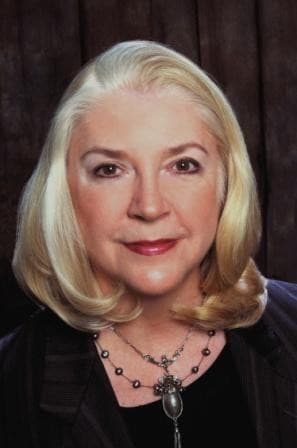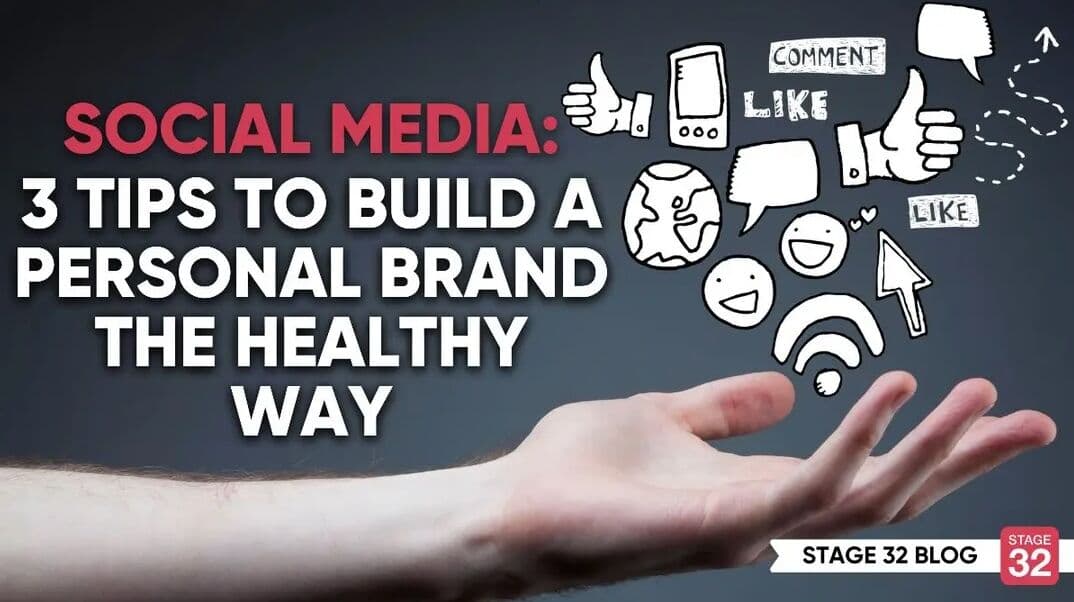The Alphabet Of Story-Telling: Increase Your Creativity & Productivity

The Alphabet Of Story-Telling: Increase Your Creativity & Productivity

Most professions have special terms that get shortened to acronyms. This can make for better communication, particularly in high-pressure situations.
Popular in texting are; LOL - laughing out loud, OMG - oh my g*d, IMHO - in my humble opinion, etc. Governments use acronyms: NASA, FBI, CIA, KGB, NSA (jokingly also known as the No Such Agency).
The military has TDY – Temporary Duty (for us it’s going on location), AAR – After Action Review (the Production Report), BDA – Battle Damage Assessment (Actualizing the Budget), and the well-known SNAFU – Situation Normal, All Fracked Up.
In production, there’s POV – Point of View, and MOS – Mit Out Sound (German for With Out Sound).
Here’s one most of us know too well: OBE - Overtaken By Events.
Let’s look at a special alphabet for media creators in Story, Character, Production, and Career.

Dry lakebed shoot
STORY
ACB = Art, Craft, Business
A – ART
You’ve had a fantastic idea. You’re in the “Flow” and writing some amazing scenes and dialogue. It’s like you’re watching the movie that is your book or script and taking dictation. That’s the Art part. To keep your Art active, feed it greatness in art, music, literature, nature, spirituality, relationships, etc.
C - CRAFT
Lots of people have great ideas. Not many people can craft them into something the rest of us want to read or see. The art is easy if you are a natural artist. The craft is hard, no matter what.
Different genres have different forms. Writing prose is vastly different from writing a screenplay. The former does not require specific formatting; the latter demands it.
Marketability is another consideration. A story for children is vastly different – or certainly should be – from a dark noir drama.
Craft is necessary to keep your audience engaged, to move the story forward, and to create an engaging experience for them. This is where books, classes, groups, consultants, and coaches can help.
B - BUSINESS
This is difficult for many of us: looking for an agent, or a publisher, pitching to companies, marketing, publicity, getting reviews, and entering contests and festivals.
What’s the best medium for your story: serial, novel, web series, feature, TV series, etc? What are the economics? Put your book up yourself or hire someone to navigate the labyrinth of self-publishing? Is the visual media version something you can shoot in your mom’s basement and upload or does it require Universal Studios’ huge Stage 12 and international theatre marketing?
Today’s technology allows millions more the opportunity to express themselves but often the financial rewards are small to non-existent. Even with a “real” publisher or distributor the writer or filmmaker is expected to do most of the promotion.
Seminars and books can help, as can bringing in someone to do the parts you can’t or don’t want to do. Always investigate before you buy as there are thousands out there offering to help make your book or film a success. Few actually do. Luckily, you're here on Stage 32 where they provide phenomenal education taught by knowledgable and experienced industry professionals.

Culver City new City Hall shoot
EEEE = Entertain, Educate, Enlighten, Express
Sometimes you just want to tell a rollicking good story - Entertainment.
Sometimes you want to make your audience aware of some situation – Educate.
Sometimes you want more depth and wonder in your story to uplift your audience – Enlightenment.
Sometimes you want to express your own emotions, history, dreams, dilemmas, successes – Expression.
Most stories are a combination of the four E’s in different proportions. Finding the correct balance for yours is a challenge, made easier by knowing how all the parts can fit together to create the desired effect on your readers. A pie chart is an easy way to analyze stories.
Barbie is probably 60% Entertainment, 25% Education, and 15% Enlightenment. As the characters learn more about different situations some take higher perspectives and make positive changes. Some characters can’t seem to move out of their old paradigms. But the visuals all look great and many viewers are asking more questions about stereotypes and expectations.
The Oscar-winning 12 Years a Slave is probably 70% Education about slavery. 20% Enlightenment about the universal and timeless evils of slavery, though because of the topic the Enlightenment and Education went rather hand-in-hand. 5% Expression as it carried the emotions of the man who had the actual experience. 5% Entertainment. But really, it wasn’t meant to entertain, was it? It was designed to Educate and Enlighten and did that very well.
Documentaries tend to be mostly Educational. Of course, one must mention the mockumentary This Is Spinal Tap which unlike most documentaries was so very Entertaining. “Turn it up to eleven.”
Terrence Malick is said by some to be too personally Expressive in his films, but they are sweeping excursions through landscapes and emotions that many do find contain the other three Es.
Memoirs run the risk of being overly concentrated on personal Expression. Eat, Pray, Love teeters on the edge between personal indulgence and sometimes valuable insights.
Apply this formula to your stories and see if you are emphasizing what you hope to convey. Does your story have a good balance of the 4-Es?
It can also enhance your experience of others’ works.

Standing on the Arctic Ocean for an Arctic shoot
CHARACTER
SDS = Sympathy, Danger, Salvation
S - SYMPATHY
We must have Sympathy for or some identification with your characters. Or curiosity about them. Or perhaps the promise of validating our own prejudices. It’s the “Who cares?” question, the “What’s the hook?” question. There must be something engaging at the very beginning for us to buy the ticket and go on this ride.
D - DANGER
You must put the characters into some kind of Danger: physical or emotional, real or imagined, from within or without, etc. Without danger there is no conflict, without conflict, there is no drama.
The three levels of the Dark Side are: Personal [your own flaws and phobias], Impersonal [nature, time, gravity], and Suprapersonal [the big baddies, evil empires, powerful antagonists, demons, etc.]
Have your protagonist up against at least two of these three levels.
S - SALVATION
There must be some kind of Salvation. Not always a happy Hollywood ending, but a satisfactory ending. Salvation can be a new awareness, a gained skill, a repaired relationship, a goal accomplished, or in the case of tragedies a vital lesson learned at great expense.
Be sure your SDS elements are compatible, complement each other, and provide the backbone for the character arc.

Filming on “America’s Army” TV series
TIG = Tribal, Individual, Group
Taking your characters on an arc up and/or down the three levels of Consciousness can provide dramatic shifts, propel the plot, and offer cautionary tales and/or inspiration to your audience.
T - TRIBAL CONSCIOUSNESS
Gangs, buddies, cults, clans, religious sects, political parties. Current political divides around the globe are fueled by tribalism, even in so-called developed countries. Vendettas, drug wars, religious conflict…all reflect people not thinking for themselves or beyond their own limited identity politics.
Cobra Kai, Gangs of New York
I - INDIVIDUAL CONSCIOUSNESS
Positively - thinks for themselves. The loner, setting boundaries, free-thinking, rebellious. Negatively – narcissism, freedom without responsibility or consequences.
Oppenheimer, Wolf of Wall Street
G - GROUP CONSCIOUSNESS
Self-sacrifice, visionary, fully connected yet keep their own identity. Strives for the greater good for the greatest number.
Avatar, Lord of the Rings (Frodo and Gandalf)

On stage at Hyundai car shoot
PRODUCTION
AHB = Always Have Back-up
Be prepared. We shot in the Arctic and learned beforehand that a thirty-minute camera battery runs out in seven minutes. We took four times as many batteries as we’d need in LA: extra baggage but absolutely essential.
GFC = Good, Fast, Cheap…Choose only two
Delivery time needs to be factored into budgeting. On commercials where the final “Go!” happens just before airdate, time is literally of-the-essence. There will be Rush Fees, there may be switch-outs because of availability, and there probably will be last-minute changes. All raise the cost.
Lots of producers like to schedule long pre-production times. It may cost more in personnel and offices but it can save a lot in the long run.
INS = Insurance
Always have Insurance. Or at least a 10-15% Contingency for things that absolutely will happen.
A colleague once saved lots of money by taking a closer look at the insurance for shipping an expensive piece of equipment back to New York. He saw the valuation rates were incorrect. It was supposed to be $100K but showed only $10K. While being loaded the crate toppled off the ramp and crashed. Fortunately, the revised insurance covered the damage.
KIS = Keep It Simple
On a car commercial for a major manufacturer, they wanted the picture car to move up an incline “as if by magic”. A Special Effects company could do it with a computer, specially-rigged gears, and a half-day build, and it would only cost ten grand. Our Key Grip said, “My crew can rig it with pulleys and ropes. We have that on hand and we’re already on the clock.” Keeping it simple saved $10,000.
POP = Process or Product
Do you want the equipment to come from a rental house where you have a relationship and discount? Or do you just need it right away? Specify if something needs to be done a certain way or just needs to be done however, it can get done.
POI = Pyramid of Information
On a busy set, you need to switch your brain over to the topic with the first words.
Don’t start, “Amber says she can have it by Tuesday but not earlier but if we like she can call a sub-let and maybe we can have it Friday, but it’ll cost more.” What?!
Instead say, “About the dolly…[that shifts your brain into that category]. It’s not available Friday from XYZ but they’ll call to sublet if we want [time-line options], but it’ll cost more [budget concerns]. Or they can get it for us next Tuesday for the regular rate [there are your choices].”

Pamela presenting & book-signing at SXSW
CAREER
CCC = Curiosity, Commitment, Collaboration
Stay open-minded, and keep learning. Stay committed, yet flexible. Build the connections that make things happen in this industry. Give back and pay it forward.
GP & RTC = Get Paper & Read the Contract
Don’t do any job without “paper”: a Deal Memo or a longer Contract. As Hollywood mogul Samuel Goldwyn noted, “A verbal contract isn’t worth the paper it’s written on.”
Too many people have worked on projects without a Contract and ended up getting no returns for their efforts. Unfortunately, even with a Contract you won’t always get paid.
A free Option is not a real Option. Especially not an exclusive and/or open-ended free Option. Just don’t do it.
For writers, if possible get more than one-half of your fee upfront. And if possible get the balance before delivery. Check Writers Guild guidelines.
Familiarize yourself with Contracts. Many courses offer helpful insights.
PPP = Prepare, Position, Persist
Stage 32 offers a wide range of valuable webinars and classes to help one Prepare in many areas of creativity.
Networking and joining groups like Stage 32 helps place you in a Position where others can see your abilities and accomplishments.
Persist – As in Galaxy Quest, “Never give up! Never surrender!”
R&R – Rest and Relaxation
A colleague encourages people to take a 3-day break every six weeks. If you can get out of town, all the better. If not, create private time with no distractions.
Just as there are sound safety reasons for sufficient “turn-around” during production, we need to apply that to our personal lives as well.
CONCLUSION
Keep these Acronyms in mind as you create, craft, and market your stories. Your audience unconsciously expects them. Your potential publishers and producers consciously demand them.
And…we’d like to hear what you would add to this list, plus your experiences of those listed.
Wishing you all the very best with all your creative projects.
OUO – Onward! Upward! Outward!
Let's hear your thoughts in the comments below!
Got an idea for a post? Or have you collaborated with Stage 32 members to create a project? We'd love to hear about it. Email Emily at blog@stage32.com and let's get your post published!
Please help support your fellow Stage 32ers by sharing this on social. Check out the social media buttons at the top to share on Instagram @stage32 , Twitter @stage32 , Facebook @stage32 , and LinkedIn @stage-32 .
About the Author

Pamela Jaye Smith
Author, Director, Screenwriter, Script Consultant, Story Analyst
Mythologist, author, international story consultant and speaker, screenwriter, award-winning writer-producer-director with 35+ years in the industry. Author of SYMBOLS.IMAGES.CODES, POWER OF THE DARK SIDE, INNER DRIVES, BEYOND THE HERO'S JOURNEY, SHOW ME THE LOVE!, and ROMANTIC COMEDIES. Consults on...




